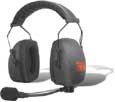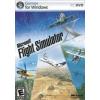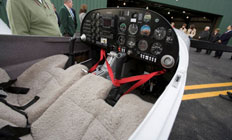
The Gateway to USAF Aviation
If you are en route to Initial Flight Training (IFT), be sure to input your travel data to the DOSS IFS website and read the Student Arrival Guide. IFT is a prerequisite program to introduce Active Duty, Air National Guard, Air Force Reserve Officers and ROTC cadets, who are candidates for Specialized Undergraduate Pilot Training (SUPT), Specialized Undergraduate Navigator Training (SUNT), or RPA training, to the basics of aviation and navigation before attending SUPT or SUNT training. The IFT program was preceeded by the former IFS program, and before that, the Enhanced Flight Screening Program (EFSP) which flew the T-3 Firefly aircraft. Following the grounding of the T-3, IFT and subsequently IFS was created. Recently, IFS has become IFT again.
Initial Flight Training (IFT) is the Air Force’s initial Pilot, Combat Systems Officer (CSO), and Remotely Piloted Aircraft (RPA) flying training course located in Pueblo, Colorado.
USAF IFT Information, CURRENTLY BEING UPDATED!
Daily Schedule at IFS
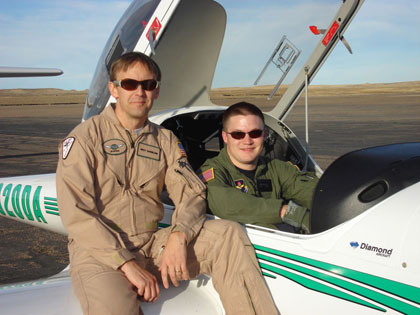
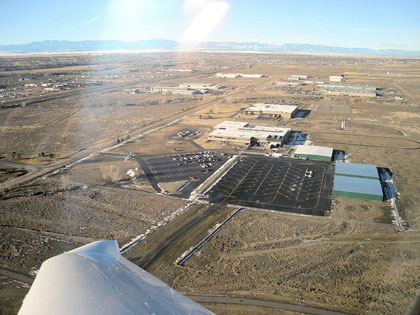
The first week of Initial Flight Screening (IFS) consists of academics. Day one is about 10 hours of typical AF welcome briefings and a PFT. The rest of the week consists of classroom academics for 11 hours a day and one hour of PT with the trainers in the gym. From the second week on, you will show up each morning in the flight room at a specific hour (this time changes for every flight and rotates weekly) for a formal brief.
Each morning, the Formal Briefing is led by one of your flight mates followed by the Stand Up Emergency Procedure (EP) that is performed by a randomly chosen flight member. The rest of your day is usually spent either flying, in the cockpit trainers they have downstairs, working out in the gym, the cafeteria, or in the flight room. You are required to complete 12 hours of Physical Training (PT) by the time you leave and they take the sign-out sheet away at 1500 so usually people try to get as much done early as possible.
After the day was over, we were free to do whatever we wanted, and most of the time we simply studied.
Ground School
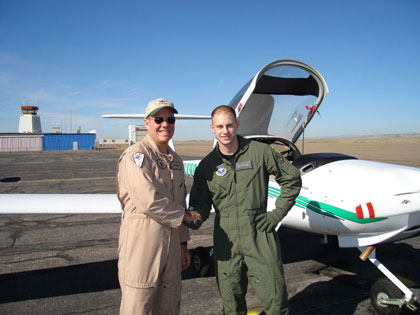 All of your ground school is covered in the first week. Each class is about an hour and the classes include aerodynamics, airport markings, and specific flight maneuvers. You must also learn various EPs fro the DA-20 which is usually self study. Each section was broken into a number of lessons, ranging from 3 to 9 depending on the topic. The lessons were covered one at a time back to back with a few minutes of break every hour or so. All academics are covered in the first week and the second week is just flying and pre/post flight. In addition to the academic sections, there is also a list of emergency procedures. A few are reviewed each day, and are basically taught as a standup EP, though in smaller groups either with your IP or another instructor.
All of your ground school is covered in the first week. Each class is about an hour and the classes include aerodynamics, airport markings, and specific flight maneuvers. You must also learn various EPs fro the DA-20 which is usually self study. Each section was broken into a number of lessons, ranging from 3 to 9 depending on the topic. The lessons were covered one at a time back to back with a few minutes of break every hour or so. All academics are covered in the first week and the second week is just flying and pre/post flight. In addition to the academic sections, there is also a list of emergency procedures. A few are reviewed each day, and are basically taught as a standup EP, though in smaller groups either with your IP or another instructor.
Download Study Material
CAO: 29 September 2015
Flight Syllabus
The flight syllabus introduces a number of maneuvers and procedures in order according to their difficulty. During your flights you will learn several basic maneuvers, patterns, and arrivals/departures. Most of the things you will need to know you will learn in the first four flights, the next six are practice. The maneuvers you learn include civilian style steep turns, S-turns, power on/off stalls (straight and turning), turns-around-a-point, and slow flight and military style normal approach, no-flap approach, and simulated force landing approach.
There is only one check ride now – at the very end of the course. You receive an overall grade for each ride as well as an individual grade for each maneuver performed. There was a 3 flight continuity, so you got a chance to practice each maneuver/procedure fairly often. The maneuvers included ground operations, landings, patterns, arrival/departures, stalls, turns/steep turns, basic control, climbs/descents, basic instruments, inflight checks, and simulated forced landings to name a few. Overall there was about 35 different maneuvers / procedures that they could teach you, with all but 5 requiring a proficiency check to pass the course.
Written/Oral Tests
You are expected to know your boldface/ops limits from day one. You will continue to take the test every day till everyone passes and you are allowed to wear flight suits. From then on everyone must take the boldface/ops limits test every Monday and before your checkride. To pass boldface/ops limits tests everything must be exactly as it is on the study sheets, including abbreviations (30 sec. not 30 secs, etc.) There is one ground exam at the beginning of your second week. 85% is the minimum score on this, and all tests (with exception to boldface/ops limits) but there are practice quizzes on the intranet so there it is not hard to pass. Every Wednesday there are EPQs which have ground knowledge, local flying procedures, and EPs. The checkride also involves a ground portion. Last, each sortie has two EPs (one you brief, one you conduct like a standup) plus your daily standups make EPs very important.
Checkride/Standards
The check rides themselves were pretty much like any other flight. The only thing that was different was that the IP didn’t say anything during the flight, unless you became unsafe. They only rode along and took notes, either mentally or on paper. After the flight, during your post-flight briefing, the IP gives you a boldface/ops limits test, and asks a number of questions pertaining to the systems of the aircraft, as well as any other things covered in ground school. The questions were not uniform, and could be anything the IP wanted, however they were not obscure or too difficult of questions.
The standards for a checkride require you to perform most maneuvers to “Fair” standards. What does this mean? That you can perform them safely without IP intervention or help. From most that I have talked to the consensus seems to be that the hardest part is the landings, not area maneuvers. The IPs will not approve you for solo until you can pass your checkride so keep in mind that if you solo, you SHOULD be able to perform everything to standard during the checkride. Overall, it is a hard program but it is not impossible, the main mission is to see if you are able to learn to fly the AF way – are you trainable on a fixed Air Force timeline. The standards themselves were realistic, and the syllabus introduced them at a good pace. Studying each night was recommended, but you could pass without killing yourself. The best thing to get out of this program is that the daily schedule mirrors a day in Undergraduate Pilot Training (UPT) – from the morning formal brief, to standup, to flights, etc. It is a bit strange living since everything is inside so unless you are flying you do not go outside and the hotel rooms have no windows, however, Doss Aviation does an excellent job. All the employees are great and the food is excellent for cafeteria food. Last, the IPs (at least the ones I dealt with) do an excellent job.
Overall, I can only speak to the program as I saw it. The building has the capacity for almost 200 people, and there are hangars for the planes right on the property. There was also a dedicated taxiway from the hangars out to the flighline. There was also a workout facility and chow hall, so there is no need to go to a separate gym like we did. The original IFS class back in 2006 only had 1 flight of 15 students.
Thanks to Shawn Alcock (2006) and Patrick Godfrey (2009)
A Diamond DA-20 aircraft awaits students of the Air Force’s new Initial Flight Screening program on the flightline of Pueblo Memorial Airport in Pueblo, Colo. Visit the new IFS 306 Flying Training Group / Det 1 official website. New students pre-arrival checklist are posted on this website in addition to the DA-20 Boldface, Ops Limits, and more.
Related Links:
- Incoming IFS students: information here
- Visit the 19th AF IFS official website
- Read more about Air Force IFS in an online IFS Blog.
Primary Responsibility: HQ AETC/A3FI.
Special Notes: An active duty service commitment will not be incurred as a result of attending this course.
Waiver Authority:
- 306 FTG/CC for syllabus waivers
- HQ AETC/A3F for entry prerequisite waivers
Location Information:
Pueblo, Co USAF
1 William White Blvd, Ste 200
Pueblo, CO 81001
Comm 719-423-8600
POC: DOSS Aviation

